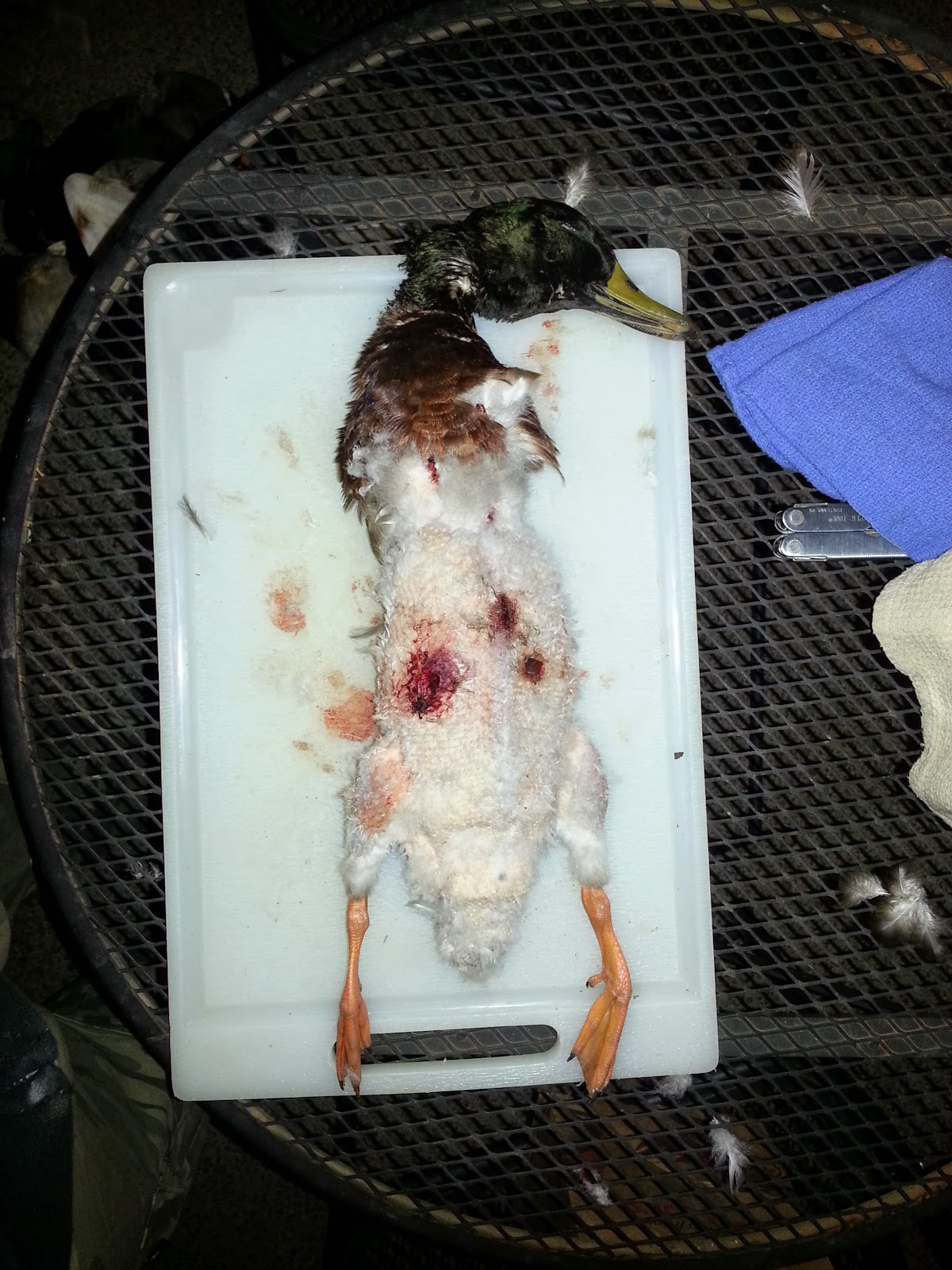Nine surprise ducks
showed up on my porch last night. A
neighbor went hunting and dropped them off unexpectedly. Wow was my wife surprised when she got home!
Well, when 9 ducks
generously appear on your doorstep, there is nothing you can do but be thankful
and get to pluckin. In case you find yourself in this situation, here is how I processed them.
One thing to note. I'd been told by a friend that it is best to let any game birds sit overnight in a cool/cold place. This allows the feathers to loosen up and makes the plucking easier. So, I left the ducks in the unheated garage overnight. Then I got up at the crack of dawn to get these guys done before work.
Supplies Needed:
- A table outside
- A sharp, thin knife
- A brown paper bag for feathers
- A bucket or something for waste parts
- A bowl or something for keeping parts
- A hand towel
Boneless Duck Breasts
Step 3: Use very sharp knife to make a gentle incision in the skin along the breast bone. The weight of the blade should be enough. The skin is very thin and you don't want to cut into the meat by accident. Then, using two hands, wiggle your fingers under the skin and pull it apart to reveal the breast meat. Pull the skin apart until you can see the outside edge of the meat along the side of the rib cage.
Step 4: Using a very sharp and thin knife (I use a boning knife but a fillet knife will work well too), cut straight down along the breast bone. Then carefully trim the meat away from the rib cage. Trim the connective membrane at the edges to release the meat. If you've ever done boneless chicken breasts, then you'll see it's exactly the same process.
Optional Step 5: If you want the legs too, just pluck further down the body to expose the legs. After you remove the breast meat, then cut through the skin to the hip. Turn the carcass over and pull the leg gently back to dislocate the hip joint. Use your thin sharp knife to cut between the hip and thigh bone to separate the leg from the body.
That's how you get breasts and legs from a whole duck. It's pretty easy. The plucking takes the longest time. It's true that you don't get the two duck delicacies--the liver and the fatty skin. But it is quick and it gets 90% of the edible parts of the duck.
A Whole Duck
When you do boneless breasts it seems like there is a lot of the bird that goes to waste. So, if you want to a whole bird carcass, here is how I did it.
Step 1: Setup your bird. You're going to have a lot of feathers, so make sure you have your feather bag ready.
Step 2: Pluck the entire body of the bird. Do a better job than I did. Don't worry about the neck and head unless you really want to keep them for some reason.
Step 3: Remove the neck and head with a strong knife, kitchen scissors, or a cleaver. Then using your sharp, thin knife, gently cut open the abdominal cavity just below the rib cage. You DO NOT want to puncture the intestines, so don't go deep. When the cavity is open, slide one hand in along the inside of the rib cage. Gently loosen the guts with your fingers, then scoop everything out. If you want the liver, watch out for it. The heart will probably need to be pulled out separately. It is normally pretty high up in the body cavity and firmly attached.
When everything is done, just wash the parts you want to keep under cold water and vacuum seal them up. Make sure to wash away and very dark blood clots that might be left over. Your vacuum sealed duck can keep in the freezer for a long time.
That is how you process 9 ducks before work on a Tuesday!


















